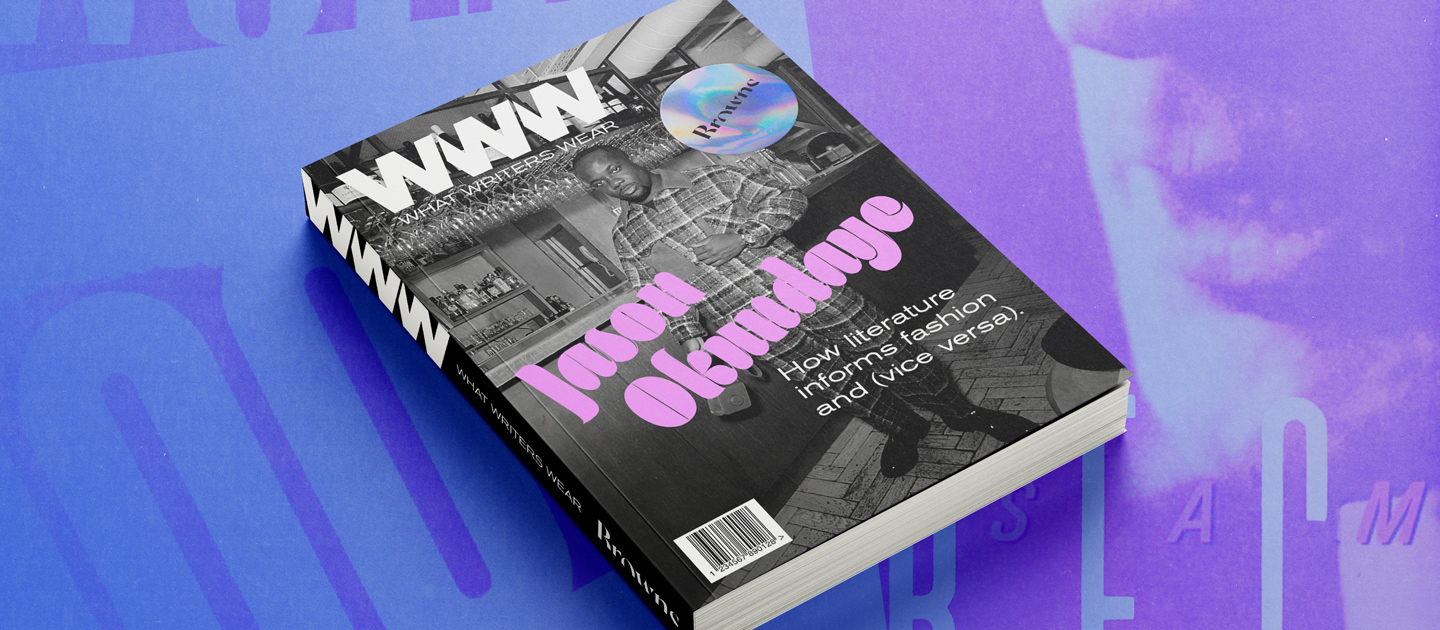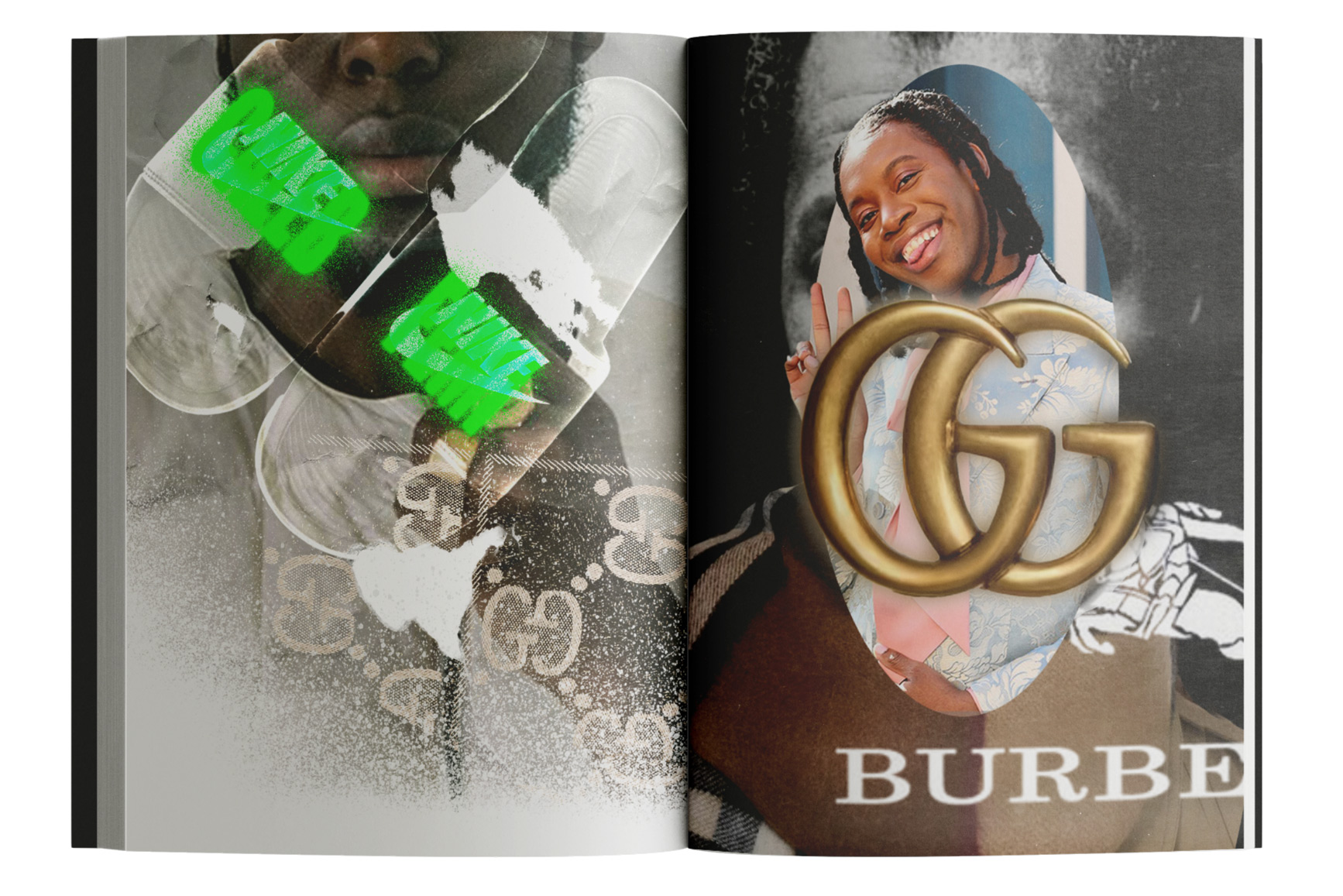
What Writers Wear
by Jason Okundaye
“Fashion is instant language,” Miuccia Prada once said. For a writer, language in all its forms is fundamental. Nonetheless, as a profession which is deeply solitary and unglamorous in its moments of labour (in bed, furiously typing to meet a deadline with bloodshot eyes, snacks and socks scattered across the mattress), it may seem counterintuitive to suggest that fashion is core to many writers’ success. But in his 2017 book Legendary Authors and the Clothes They Wore, Terry Newman asserts that “persona is closely connected with how you dress”, rejecting the idea that it would be “audacious”, “to tie together the heavyweight value of Samuel Beckett with a discussion of the fact that he wore Clarks Wallabee shoes.” Evidently, some writers like to delight in both their words and garments.
I formed my own conclusions about the importance of both kinds of writerly style when I signed my first publishing contract last year. I realised that people might look to gain some understanding of the kind of writer I am simply by looking at me. It was at this point that I began to discuss with friends in the fashion industry how I might overhaul my style. Fast fashion convenience was quickly replaced with Issey Miyake, showing my appreciation for technical dexterity in both pleats and penmanship. I donned Nicholas Daley tartan to emulate a respect for culture and heritage. Second-hand Wales Bonner purchased off eBay to communicate a commitment to sustainable practices, and thus signify the ethical considerations in my work. As such, my clothes influence my writing just as much as my writing influences my clothes.
What’s more, effective networking and strategic positioning are open secrets of the trade, and how you dress attending in-person events can leave a lasting impression with the contacts you meet. If you can’t break into a monologue of your best essay, you can at least make yourself memorable with the statement loafers you’re wearing. After all, threading the quality of your prose into what you wear is the most efficient way to express the kind of mind you have without saying much - or indeed anything at all. Often it’s not even about impressing writing finesse, but also about having fun and a life outside of intellectual rigour. I’m reminded of a great photo of Stuart Hall dancing, dressed in a fabulous tank top and slacks. The image seems to imply that culture isn’t only to be theorised, but enjoyed.
Of course, clothing as a means of communication is an ancestral practice. James Baldwin took to the streets of Paris in impeccable scarf ties, fur trim jackets, slacks and oval sunglasses; ensembles which declared “I am here”. Like a floating sermon, he evangelised onlookers with his glorious eclecticism and sartorial elegance, enticing them to read his pages on love, class and liberation.
I recently interviewed the playwright Jeremy O Harris (fabulously dressed in a typically dandy-ish glittering Gucci check wool suit) where he mentioned to me that he had been researching the late work of James Baldwin. Turns out the man lived up to his mythology - when O Harris visited Baldwin’s final apartment in Saint-Paul-De-Vence, he encountered “all these Burberry jackets”, which he found beautiful and complex - just like the writer himself.
I remember first coming to know my friend, the poet Caleb Femi, and remarking on what an incredible dresser he was, mixing Nike slippers and padded vest jackets with silk Gucci scarves. It was no surprise, then, to learn that he was writing and directing Louis Vuitton campaigns under the late Virgil Abloh, and collaborating with Bottega Veneta. Equally, the lauded Irish poet Seán Hewitt’s editorial in Port Magazine, donning head-to-toe Zegna as he read from his collection Tongues of Fire was an incredible harmony of verse and fabrics.

As Newman says in his book, fashion houses have long held authors as muses, “mining” them for their “ideas and intellects”. In 2015, a bespectacled Joan Didion became the face of Céline, whilst Hunter S Thompson’s famous deep-pocketed patchwork coat was directly referenced in Henry Holland’s maximalist SS 2016 ‘Urban Safari’ collection. As Newman continues, “Reading a fashion collection can be like reading a book: it’s a gold mine of influences, references, research, and creativity. An author’s work is similarly a composite of their lives, values, imagination, talent, and distinctiveness. Some of those magical ingredients inevitably seep into their wardrobe.”
Whilst there’s a strong case for why they shouldn’t, the fact is that clothes do matter, and communicating through your clothes is often synonymous with being a writer. It bears remembering that books are judged by their covers, and similarly writers by their style. In today’s attention economy, it pays to be provocative and intriguing.
Related Reading:
IMAGINE: Visual Language And Aesthetics
A Short Story By Raven Smith
Marlowe Granados' Spring Fling
See All Stories:
